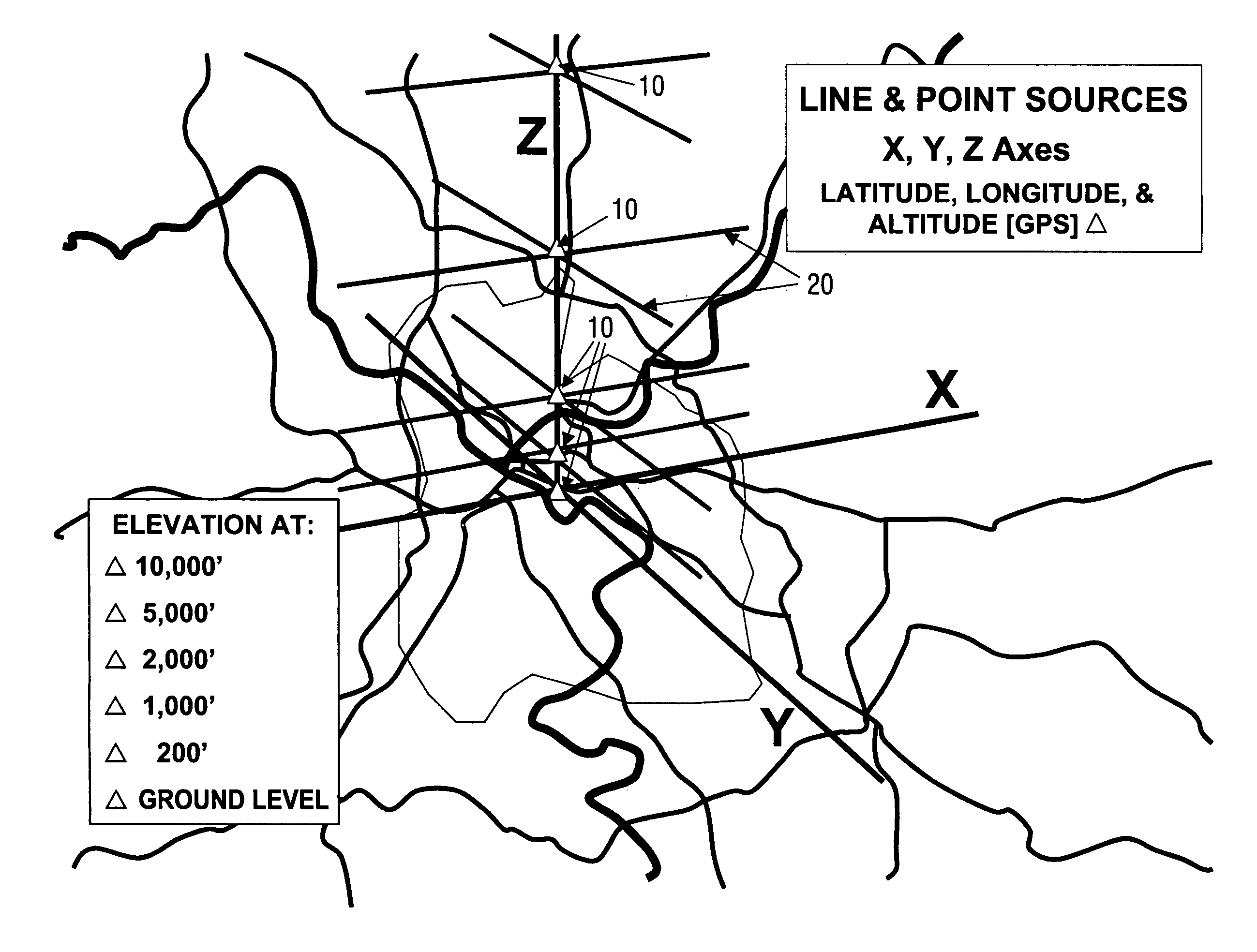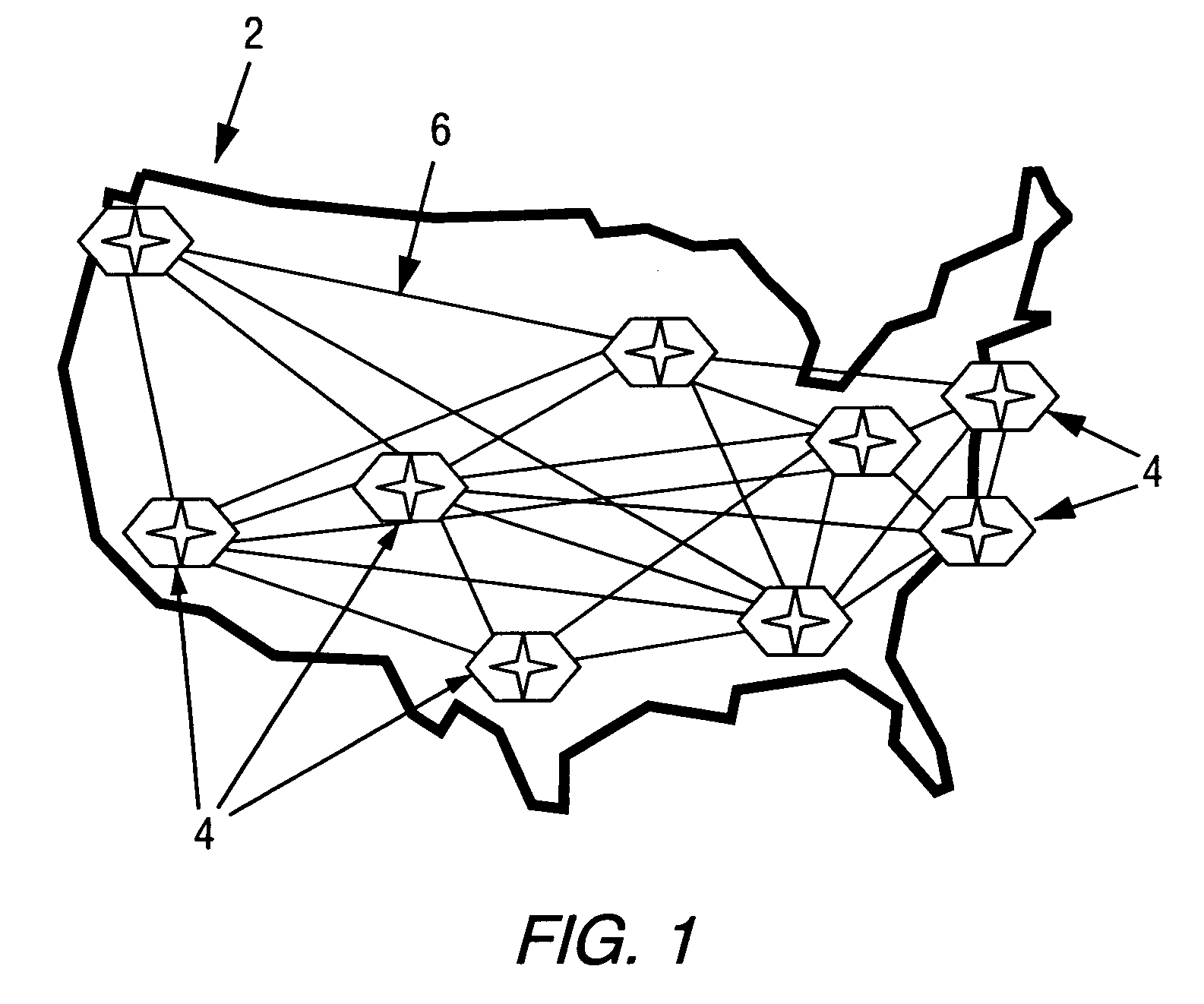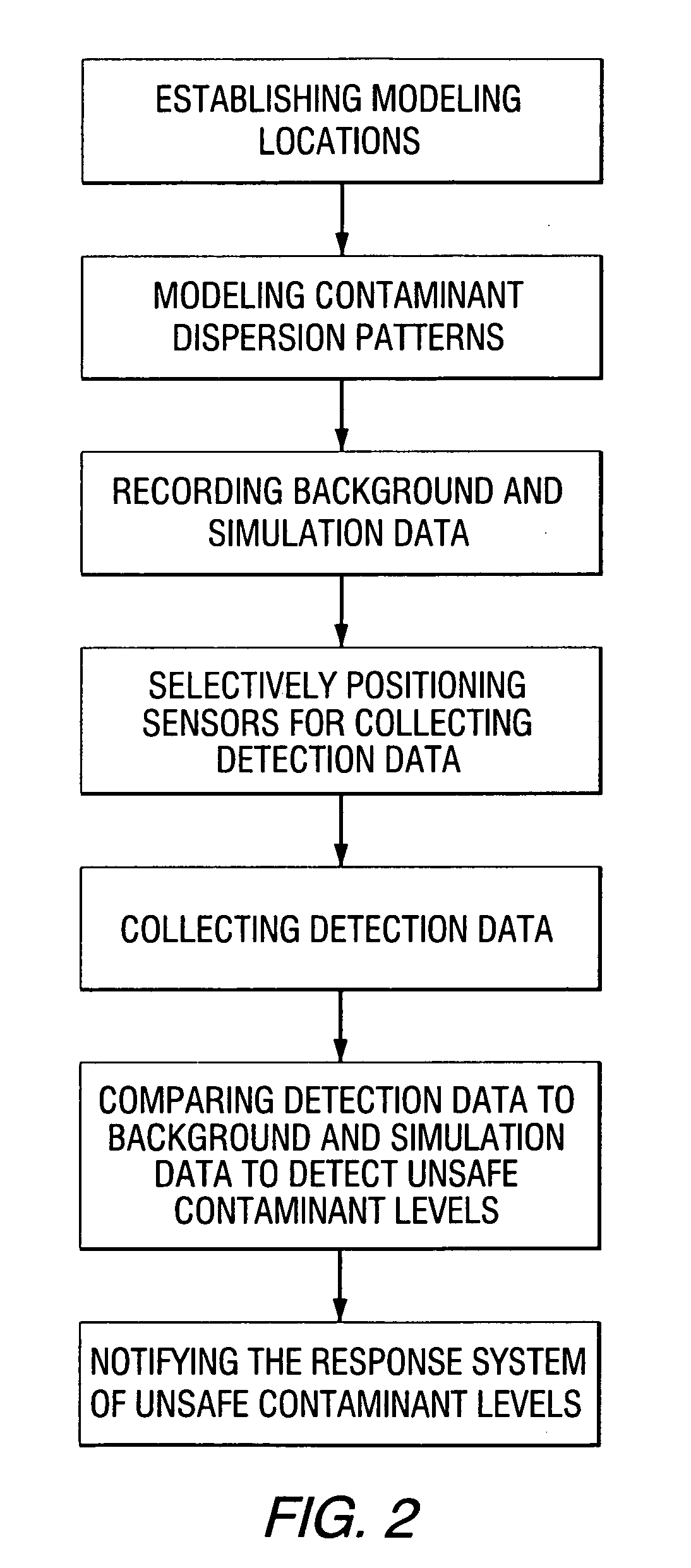Methods for detecting biological, chemical or nuclear attacks
a biological, chemical or nuclear technology, applied in the direction of nuclear explosives, instruments, fire alarms, etc., can solve the problems of large area, ineffective and rapid identification, and inability to achieve effective and rapid detection,
- Summary
- Abstract
- Description
- Claims
- Application Information
AI Technical Summary
Benefits of technology
Problems solved by technology
Method used
Image
Examples
Embodiment Construction
[0033]In accordance with the present invention, methods are provided for detecting chemical, biological and / or nuclear attacks in large areas such as cities, states and nations. The methods provide continuous, real-time sensing of such attacks and immediate protective measures that mitigate human health risks, e.g., medical response procedures for emergency rooms and hospitals, warning alarms, instructions for personal protection, dispatch of medicine, sealing of buildings or the like. Additionally, the methods provide for remote ground and space-based diagnostic and “neutralizing” capabilities in the not-too-distant future (i.e., anti-aerosol bombs, remote deactivating / neutralizing laser and other anti-aerosol capabilities, etc.).
[0034]First, an area of concern (“target area”) is defined. This area may comprise any large geographic tract of land, such as a city, state, country, nation, continent or even the world. Within this large area, sub-areas may be defined, and these sub-area...
PUM
 Login to View More
Login to View More Abstract
Description
Claims
Application Information
 Login to View More
Login to View More - R&D
- Intellectual Property
- Life Sciences
- Materials
- Tech Scout
- Unparalleled Data Quality
- Higher Quality Content
- 60% Fewer Hallucinations
Browse by: Latest US Patents, China's latest patents, Technical Efficacy Thesaurus, Application Domain, Technology Topic, Popular Technical Reports.
© 2025 PatSnap. All rights reserved.Legal|Privacy policy|Modern Slavery Act Transparency Statement|Sitemap|About US| Contact US: help@patsnap.com



